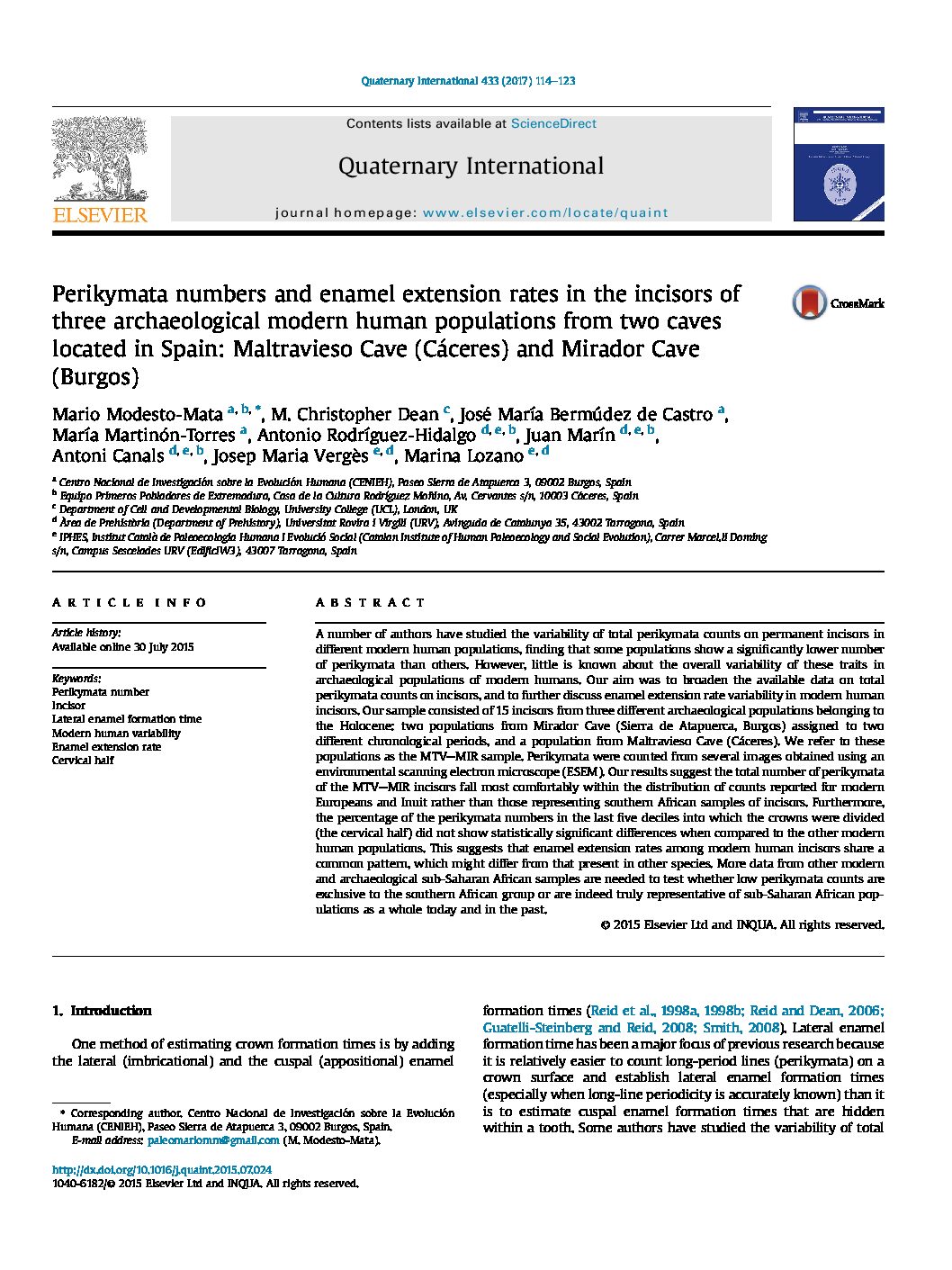New methodology to reconstruct in 2-D the cuspal enamel of modern human lower molars
Objectives In the last years different methodologies have been developed to reconstruct worn teeth. In this article, we propose a new 2-D methodology to reconstruct the worn enamel of lower molars. Our main goals are to reconstruct molars with a high level of accuracy when measuring relevant histological variables and to validate the methodology calculating the errors associated with the measurements. Methods This methodology is based on polynomial regression equations, and has been validated using two different dental variables: cuspal enamel thickness and crown height of the protoconid. In order to perform the validation process, simulated worn modern human molars were employed. The associated errors of the measurements were also estimated applying methodologies previously proposed by other authors. Results The mean percentage error estimated in reconstructed molars for these two variables in comparison with their own real values is −2.17% for the cuspal enamel thickness of the protoconid and −3.18% for the crown height of the protoconid. This error significantly improves the results of other methodologies, both in the interobserver error and in the accuracy of the measurements. Conclusions The new methodology based on polynomial regressions can be confidently applied to the reconstruction of cuspal enamel of lower molars, as it improves the accuracy of the measurements and reduces the interobserver error. The present study shows that it is important to validate all methodologies in order to know the associated errors. This new methodology can be easily exportable to other modern human populations, the human fossil record and forensic sciences.






